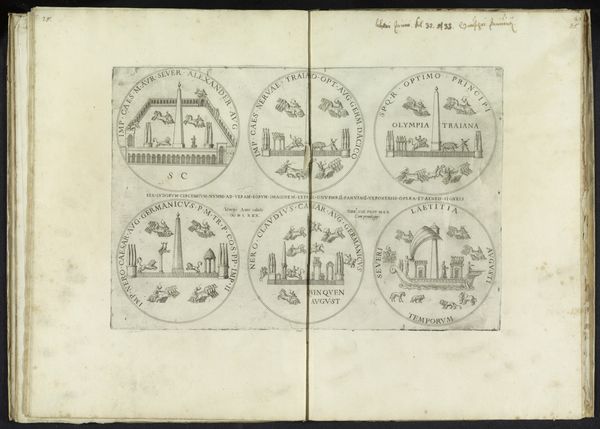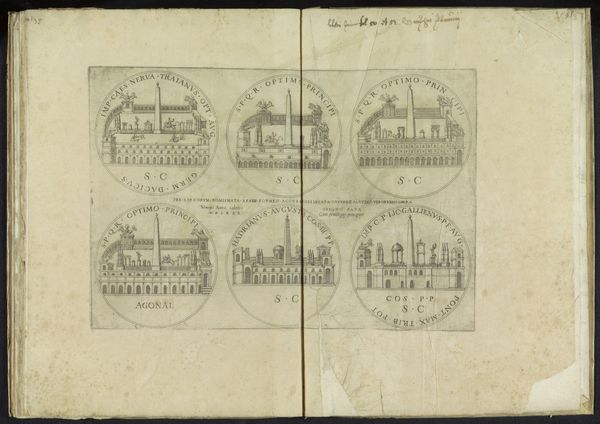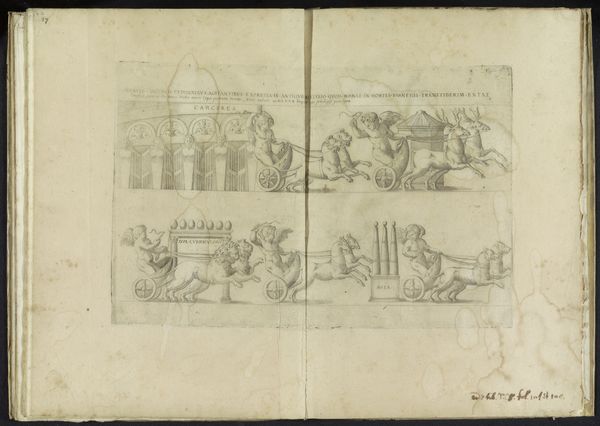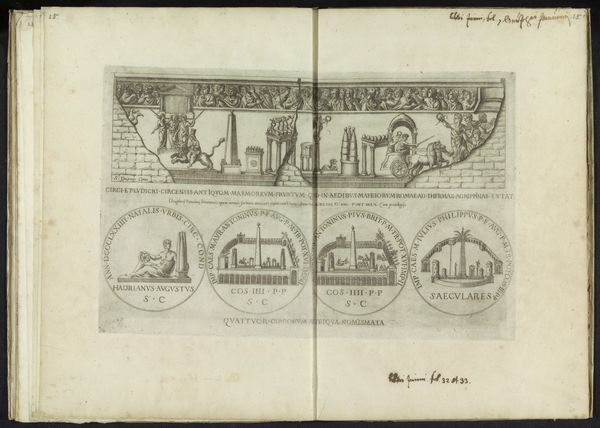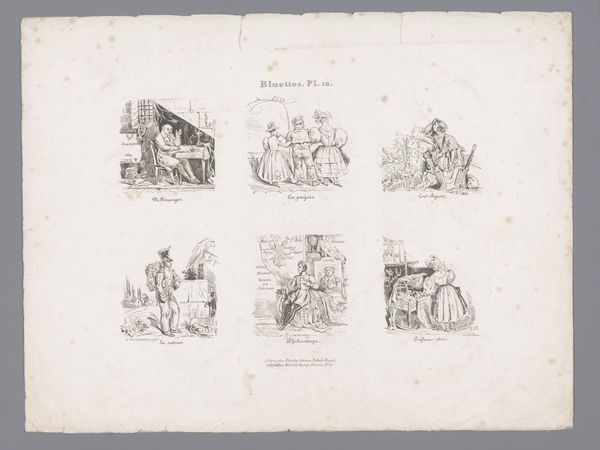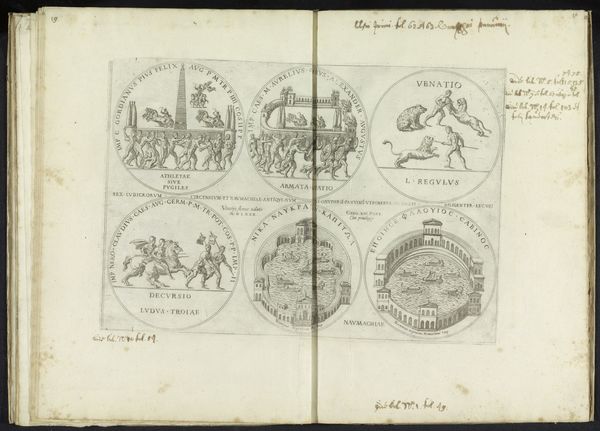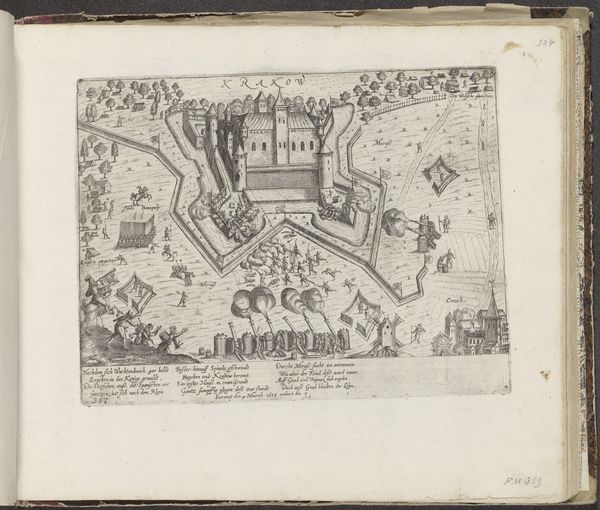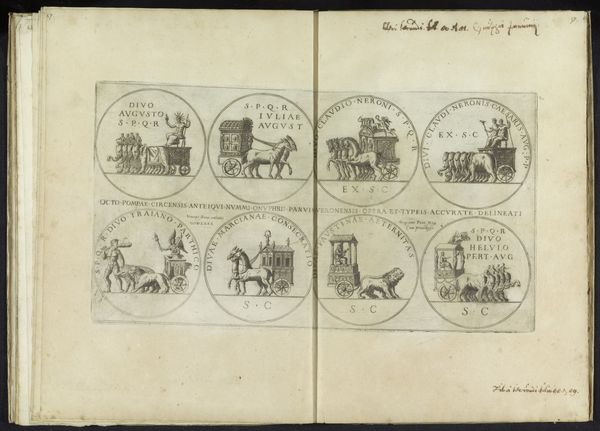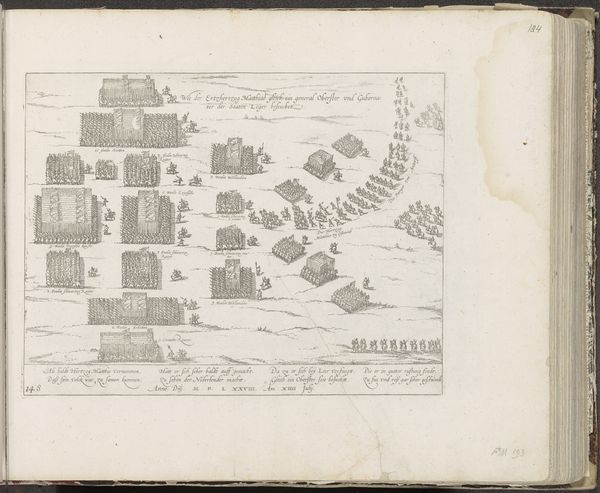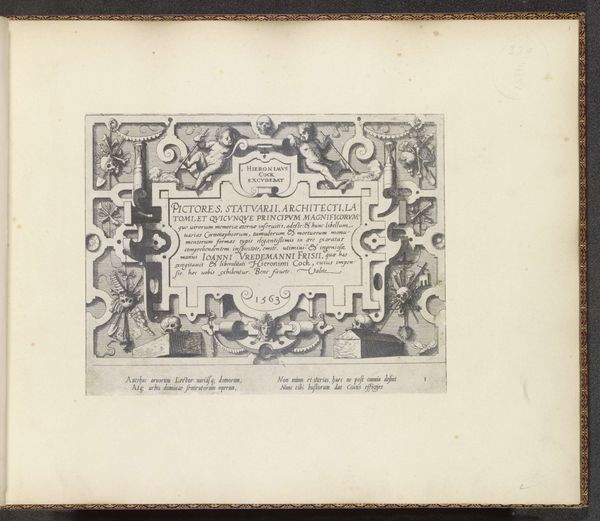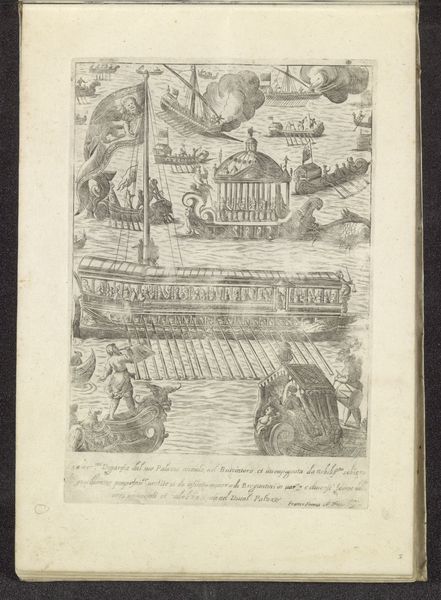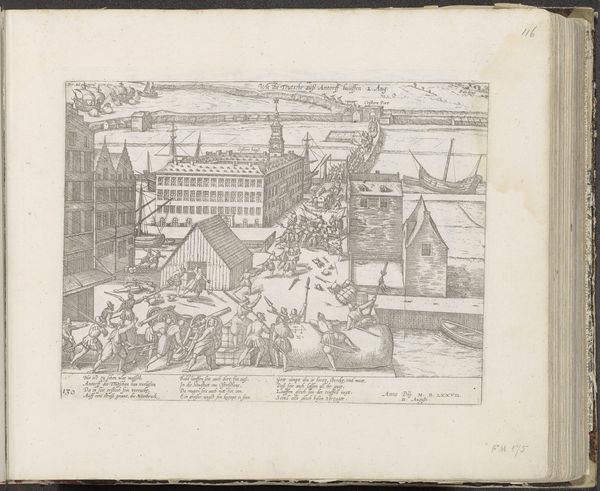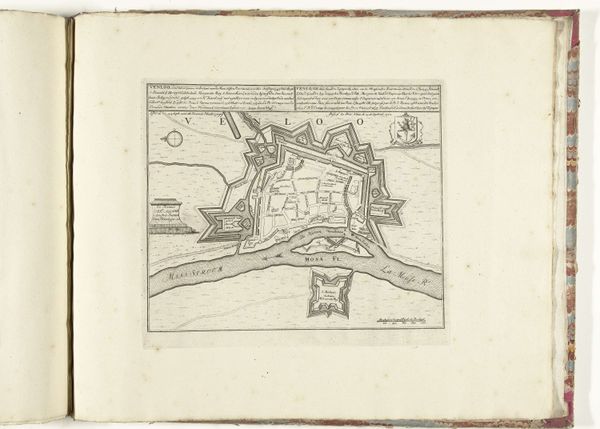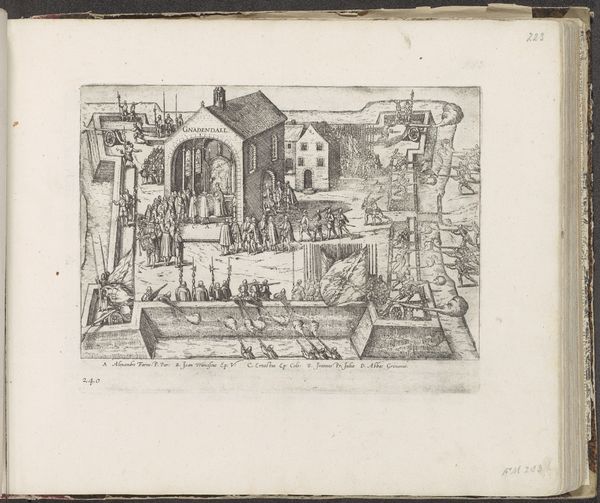
drawing, paper, ink
#
drawing
#
paper
#
11_renaissance
#
ink
#
geometric
#
ancient-mediterranean
#
line
#
cityscape
#
history-painting
Dimensions: height 280 mm, width 400 mm
Copyright: Rijks Museum: Open Domain
Editor: This ink drawing on paper from 1580, "Wagenmenners en vier penningen" by Onofrio Panvinio, presents an interesting classical scene. There's almost a blueprint-like quality, detailing processional chariots above these circular architectural renderings. I’m curious – what strikes you when you look at this piece? Curator: What stands out is the way Panvinio uses this drawing to document and, in a way, authorize a vision of Roman power and its relationship to its urban environment. He's not just depicting a cityscape, he’s crafting an image of an ideal past, and presenting this past as something powerful to be remembered and perhaps even emulated. Look at the precise, linear style; what do you make of the use of inscription throughout? Editor: I see what you mean about idealization. The style feels almost clinical. The Latin inscriptions surrounding the images, labeling the architecture, reinforce that air of authority and scholarly documentation. They feel like a deliberate act of preservation. Do you think this drawing served a practical purpose, perhaps in architectural planning or as a historical record? Curator: Absolutely, but not just a straightforward record. Think about the socio-political context of 16th century Europe. The rise of nation-states, the ongoing influence of the Catholic Church – Panvinio, with his antiquarian interests, was employed by powerful cardinals. Visual records such as this helped anchor their claims of legitimacy in the grandeur of Roman history. It’s about visually connecting to power. What is the role of art, especially concerning ancient cultures, in that era? Editor: That makes perfect sense. It's not simply about accurate representation; it's about leveraging history to reinforce contemporary power structures. So the drawing becomes a tool, not just for documentation, but for actively shaping cultural narratives. Curator: Exactly. This drawing shows the intersection of art, history, and politics and how the interpretation of the past could be strategically deployed in the present. I found it insightful to consider the socio-political influences. Editor: I agree. Understanding that the art has such interplay gives me a greater respect and appreciation.
Comments
No comments
Be the first to comment and join the conversation on the ultimate creative platform.
